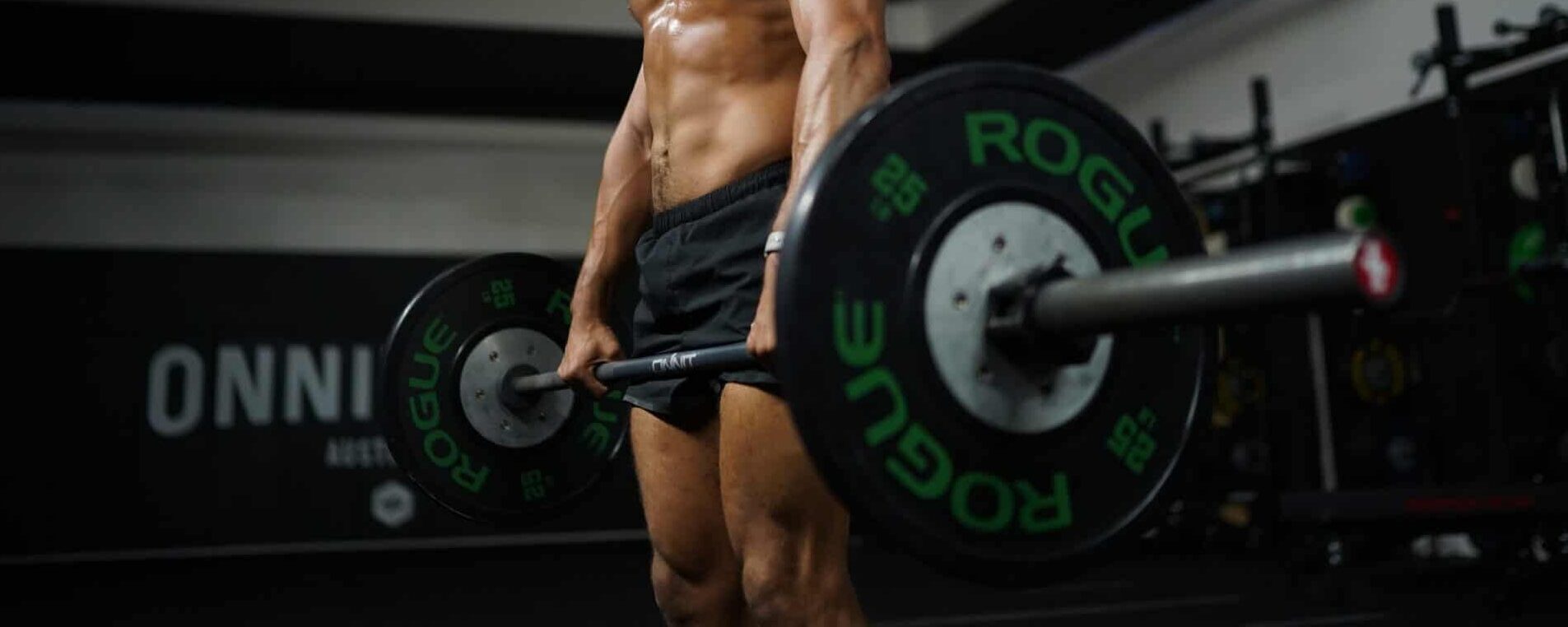
The one-rep max is something we all know about, but oddly, exactly how to test it is something that’s rarely discussed.
When do you test it? How often? Should you do it on training days, or not?
Let’s get the 101 on the One-Rep.
The One-Rep Max: What It Is And When To Test It

First things first, we have to make an important distinction: your One-Rep Max (1-RM) isn’t the same as your PR (Personal Record). PR’s are something you’ll likely be hitting regularly as long as your training is progressing efficiently, and they usually aren’t all-out attempts to get “one rep.”
Your 1-RM is your all-out attempt to push out one rep. It’s everything you have, put into a max amount of lift.
With that being said, the question of when to test your 1-RM is the most crucial, as this test is extremely taxing on your body. Generally, if you’re a non-competitive lifter, you’ll want to ensure you’re testing your 1-RM no more than 1-2 times per year. This gives you an adequate 6 months of lead time with plenty of restructuring in between, rest, and low-to-moderate stress lifts.
You’ll want your training to also reflect the lead up to your test, as the last thing you want to do is train high volume, low intensity, and then suddenly dive into your 1-RM (can we say injury setup?)! Instead, you want to make sure you’re prepping your body for the stress of the 1-RM by sliding into low volume, high intensity (90% of you 1-RM weight) at least 2 weeks before you attempt your 1-RM test.
This also preps your body for maintaining adequate form under such heavy loads. At around 90% of your max, form begins to suffer, and you ideally want a heck of a lot of practice keeping alignment and stability correct before adding on your all-out weight.
How Should You Test?
As you can see, even your training up to your 1-RM should be a bit methodical, so the day of your test should be as well! Many gym-goers tend to test at random, which is definitely not recommended. Obviously, every test day will look slightly different in terms of type of warmup, etc … but there are general guidelines.
Time Frame Per Lifts
This is dependent upon your personal preference. Some like to test multiple lifts in one test day (squat, bench, deadlift) while others prefer taking a full 1-2 days’ rest between (sometimes with better results).
If you do decide to split up lifts, no more that two days in the given week of testing is best, simply due to the stress. This can look something like:
Day 1: Test squat and bench (lower/upper)
Day 2: Rest
Day 3: 20-30 minutes low impact cardio
Day 4: Rest
Day 5: Test deadlift and/or overhead press (lower/upper)
The One-Rep
Note that your warmup should be even longer than your standard training-day warmups. If you do 15 minutes, make it 30 with light aerobics, activation movements like squats, and some dynamic stretches.
Once you’re warm, you’ll want to begin your lift in increments, starting with 10-20% of your 1-RM weight and add plates until you’re at 75%, or at least somewhat challenging.
After hitting 75-85%, you’ll want to increase by just 5%, taking a warm-up set at around 80%. Then from here, you’ll take your second-to-last final lift as an “opener,” a heavy lift of around 90%, followed by your last “warmup” in the 93-97% range. After this, you can make your attempt.
How To Determine Your One-Rep Max Weight

Now you can see why this process is only recommended twice a year! It’s pretty intensive when done right.
If you’ve steadily been tracking your top current PR’s, you’ll likely have an idea of your 1-RM mange, but there are mathematical formulas you can use to get another average (again, just an average). If you’re curious, check it out (these equations were pulled from Men’s Health mag, which pulled them from the University of New Mexico:
For your upper body, find the heaviest weight you can bench, deadlift or squat 4-to-6 times and plug it into this equation: (4-to-6RM x 1.1307) + 0.6998.
So if you can do 5 reps of 60kg, then according to the formula – (60 x 1.1307) + 0.6998 – your 1RM will be 68.5kg. For lower body, use this formula: (4-to-6RM x 1.09703) + 14.2546.
The Bottom Line
• Your 1-RM is different from a PR, which you should be hitting semi-reguarly
• You should only test your 1-RM once or twice per year
• Train with 1-RM in mind leading up to test day (low volume, high intensity at least 2 weeks before)
• Warmup time for your 1-RM should be double the time of normal warmups
• Follow a structured 1-RM lift sequence mentioned above
• Get adequate downtime and recovery after 1-RM lifts (a wind-down week, or several days off with light activity)
Let’s get to work!
